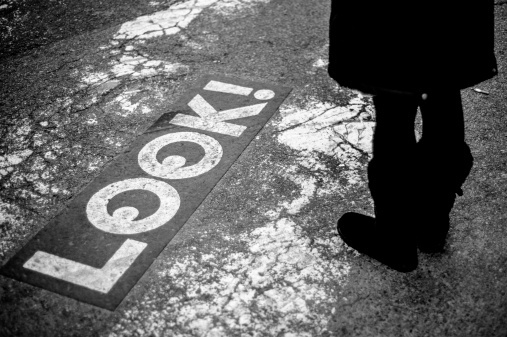
Distracted pedestrians are at risk of stepping into a busy street, but one Rutgers PhD candidate hopes to change that.
Engineers have the ability to change people’s lives for the better, and that’s just what Rutgers engineering student, Shubham Jain, hoped to accomplish with her submission at this year’s Rutgers research fair.
Her work focuses on enhancing the safety of people in busy cities without imposing restrictions or requiring any change of habit on their part. And for that, she’s been honored with an award.
Jain’s Research Focuses on Technology Distractions
Jain, an Electrical and Computer Engineering (ECE) PhD candidate at Rutgers University, presented her findings at the second annual research fair, which was held on March 3. But more than that, she won the AT&T Connected Intersections Challenge award, which was part of an awareness campaign by AT&T designed to alert users to the dangers of being distracted by technology.
The Connected Intersections challenge asked software developers, designers, and other professionals to submit solutions to the problem of distractions through wearable technology and smartphone apps that help raise safety awareness. Submissions were restricted to solutions for smartphones, tablets, the web, desktop computers, software, and custom hardware.

Distraction is so prevalent that larger cities have created alerts at crosswalks.
Technology Distractions Pose a Real Danger
The research that Jain conducted showed that technology distractions have a measurable effect on the safety of users. She explained in the abstract of her work, posted at the Rutgers University website, that 26 percent of pedestrians use technology to text or send emails, and over half talk on the phone while walking across a street.
The risk of distraction has grown so large that bigger cities, such as San Francisco, have created “LOOK!” signs on the pavement at crosswalks and intersections to get the attention of pedestrians. But that isn’t enough, according to AT&T.

Jain’s research could help improve safety for all pedestrians who use technology.
Jain Reaches the Problem Where it Lives
Jain’s research approached the problem of distraction a little differently. Instead of hoping to draw attention away from the device using a sign on the ground, her solution would generate an alert from the very technology that’s causing distraction in the first place.
In theory, a pedestrian at risk of stepping into a street would receive a “Look Up!” alert from the device. For example, on a smartphone, the user would see a message on the display, and GPS from the device would act as a locator. The challenge, she explained, would be determining which users were at risk.
AT&T’s campaign received numerous entries, all of which were judged on creativity and originality, visual presentation and execution, and the potential impact, according to the Connected Intersections challenge web page.
Prizes totaling $50,000 were awarded to the originators of solutions for pedestrians and cyclists, drivers, and multi-modal connections that help improve the connection among pedestrians, cyclists, and drivers.
Engineers have both the influence and education to improve the quality of life for people around the world. Few other professions can make such a claim. But for this field, it’s all in a day’s work.
Keeping your licensure up to date is part of an engineer’s professional responsibility. And at PDH Academy, we strive to make your life easier, too. Check out our courses, and see how simple it is to earn the professional development hours that you need.



